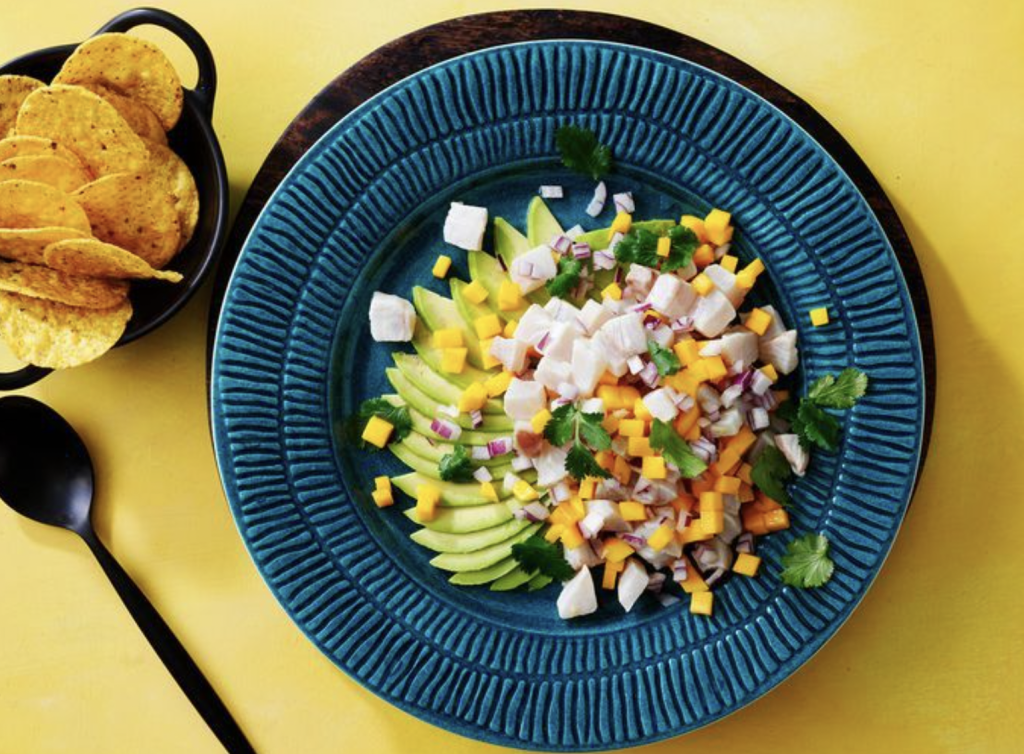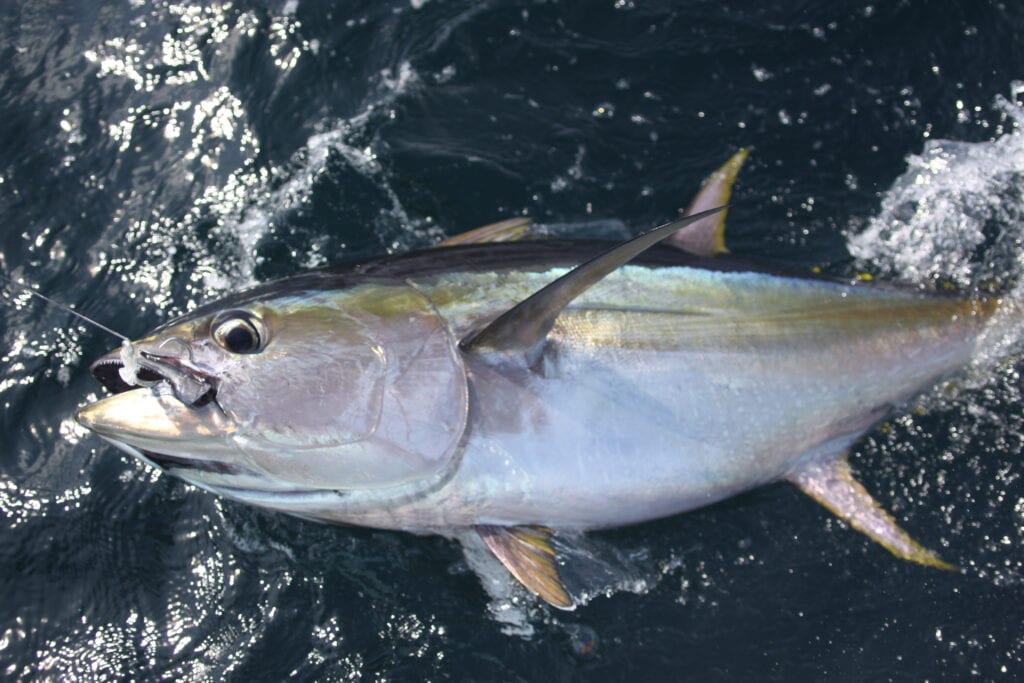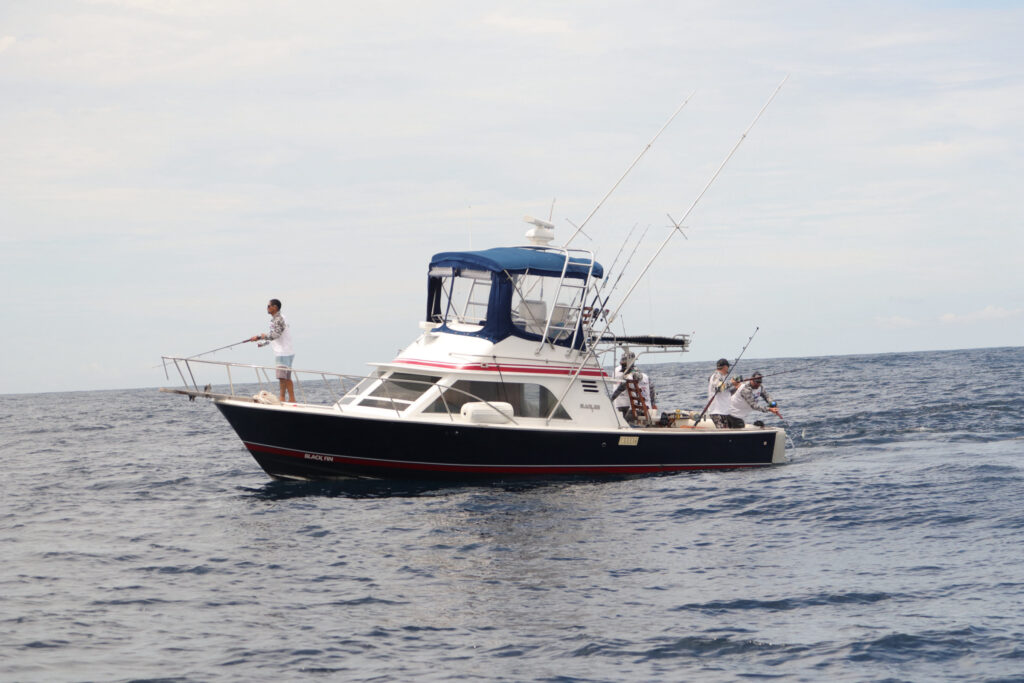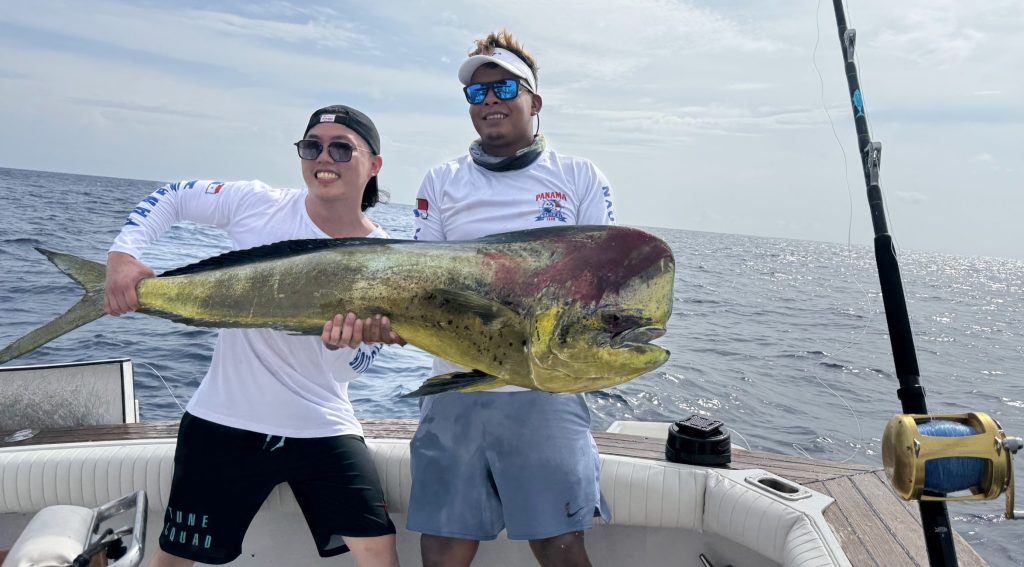There are over 30 different types of mackerel fish, all part of the Scombridae family, and are well-loved by both sport fishermen and food lovers worldwide. Known for their fast swimming and nimble movements, mackerels have sleek, streamlined bodies that make them difficult to catch, adding to the excitement of fishing. Additionally, mackerels are a popular choice for people who focus on eating healthy due to the omega-3 fatty acids content, which are great for heart health.
Types OF MACKEREL Fish
The mackerel family is rich with a diverse array of species, each boasting unique traits and living in different habitats. Let’s dive deeper into some of the most interesting types of mackerel, exploring what makes each one distinct and fascinating.
King Mackerel (Scomberomorus cavalla)
One of the largest species in the mackerel family, King mackerel is a top-tier predator in its habitat. Typically thrives in the warm subtropical and tropical waters along the Atlantic coast and the Gulf of Mexico, and can reach big sizes, growing up to 90 pounds and stretching as long as 5 feet.
Their body structure is sleek and sturdy, designed for speed and agility in the water. Its back is particularly eye-catching, displaying an iridescent silver color, highlighting its streamlined appearance.
Angles highly prize King Mackerel for sport fishing for being a challenging catch with a rich, full flavor and firm texture, making it a popular choice for various culinary preparations. However, due to its high oil content, the flavor can be quite strong, which might not appeal to everyone.
When preparing King Mackerel, it is generally advised to consume smaller portions due to the high levels of mercury it accumulates. It is well-suited to grilling, baking or smoking to help balance its robust taste.
Spanish or Sierra Mackerel (Scomberomorus maculatus)
Spanish Mackerel is a smaller cousin within the mackerel family, being a swift and agile fish commonly found in the coastal, subtropical, and tropical waters along the Atlantic Coast and Gulf Coast of the U.S. Typically, Spanish Mackerel are smaller than King Mackerel, usually reaching lengths up to 3 feet and weights of around 10 to 12 pounds.
With a streamlined, slender body that is built for speed, the fish features a sleek and silvery color adorned with golden or yellow spots that run along its sides, adding to its visual allure. These physical adaptations make it a proficient hunter and also an exciting target for fishing.
As for cooking, it is favored for its mild yet rich flavor and moderate fat content, making it less intense than King Mackerel but equally delicious. It’s a versatile fish in the kitchen, appreciated for its flaky yet firm texture. Actually, it is ideal for a variety of cooking methods, such as grilled, baked, or broiled and is particularly excellent when marinated or used in fish tacos due to its flavor and texture. Its skin crisps up nicely, which is a sought-after quality in culinary preparations. It is important to include flavors that complement its natural taste without overpowering it, including citrus juice, herbs, garlic and onion, olive oil and different spices.
Catching a Sierra mackerel in Panama is common, especially around the islands and rocks that make up the Gulf of Chiriqui.

Atlantic Mackerel (Scomber scombrus)
Atlantic Mackerel is a common species within the mackerel family, highly regarded for its speed and agility. This fish predominantly resides in the cooler waters of the North Atlantic Ocean, ranging from North America to Europe. It is smaller than the King Mackerel, typically growing to about 16 to 22 inches in length and weighing around 1 to 3 pounds.
Their sleek, streamlined body is built for fast swimming, marked by beautiful, iridescent stripes that run vertically down its sides, which shimmer in blue and green hues. This striking appearance is visually appealing and also helps in camouflaging it in the water.
Similar to King Mackerel, Atlantic Mackerel is valued for its rich, oily flesh that is packed with flavor and nutrients, typically used in European cuisines, often cooked smoked or pickled. Mustard and Horseradish condiments offer a spicy kick that pairs nicely with the mackerel’s fatty content.
Cero Mackerel (Scomberomorus regalis)
Cero Mackerel, also known as the painted or kingfish mackerel, is a vibrant species found in the subtropical and tropical waters of the western Atlantic, from Florida to Brazil. Unlike its larger relatives, Cero Mackerel typically reaches lengths up to about 5 to 6 feet but generally weighs less than King Mackerel, making it a medium-sized member of the mackerel family. Its striking appearance and spirited nature make it a popular target among recreational anglers.
The Cero Mackerel is distinguished by its sleek, streamlined body and beautiful coloration. It has a blue-green back and silver sides, decorated with a series of yellow stripes and spots, making it one of the more visually striking types of mackerels, which camouflage among oceanic plants and reefs.
This type of mackerel fish, the Cero Mackerelm, is appreciated for its mild yet flavorful taste and moderately oily texture, which is less intense than that of the King or Atlantic Mackerel. It can be cooked using several methods that highlight its delicate flavor and firm flesh, such as grilled, broiled, or fried, accompanied with spices and soy or teriyaki sauce, specially to add texture to the dish.
Chub Mackerel (Scomber japonicus)
Club Mackerel is a commonly found species across both the Atlantic and Pacific Oceans. Typically reaching lengths of about 18 inches and weighing up to 3.5 pounds, this species is noted for its adaptability to different marine environments being frequently caught in both commercial and recreational fishing.
Its main characteristics is their robust, streamlined body that supports its active swimming lifestyle. It has a distinctive appearance with a series of vertical stripes running down its sides, transitioning from a dark blue on the dorsal side to a silvery belly. These bands help camouflage the fish in the water, making it an effective predator.
Apart from its abundance and spirited nature when hooked, Chub Mackerel is appreciated for its rich, oily flesh that is both flavorful and nutritious. When preparing culinary dishes, you can follow the same cooking methods as the Atlantic Mackerel, but resulting in a milder taste, making it accessible to a wider palette.
Atlantic Horse Mackerel (Trachurus trachurus)
Atlantic Horse Mackerel is a robust fish found widely in the temperate and tropical waters of the Atlantic Ocean, as well as in the Mediterranean and Black Seas. It is not a true mackerel but is closely related and shares many similarities in appearance and habitat. This species can grow to a length of about 24 inches and typically weighs up to 3 pounds.
Their slender, elongated body with a high, narrow tail, is highly efficient for fast swimming. It features a silvery body with a blue or greenish back and a distinctive line of scutes (small, bony plates), allowing swift movements and a defensive mechanism against predators.
It is valued in the kitchen for its dark, firm flesh that is flavorful and holds up well during cooking. As the Atlantic Mackerel, this fish is particularly popular in European cuisine, often cooked grilled, baked, or used in stews and marinades.
Wahoo (Acanthocybium solandri)
Wahoo is a fast-swimming species found in tropical and subtropical waters worldwide, notably around the Atlantic, Pacific, and Indian Oceans. It is not a true mackerel either, but is closely related to the mackerel family known for its speed and agility. Typically, Wahoo can grow to about 8 feet in length and weigh up to 180 pounds, making it one of the larger game fish targeted by anglers.
Wahoo has a long, slender body that is predominantly silvery with a blue-green sheen on the back. It is distinguished by a series of 24 to 30 faint vertical bars on its sides, which are not always prominent but add to its visual attraction. The fish’s sleek build and sharp, pointed teeth are adaptations that make it an efficient and formidable predator.
The Wahoo is highly esteemed in the sport fishing community due to its explosive first run when hooked, offering a challenging catch to thrill-seeking anglers. In culinary terms, unlike the rest of Mackerel types, Wahoo has a smaller oil and fat content, considered one of the finest among pelagic fishes, making it a versatile ingredient in various dishes. Wahoo is specially admired for its delicate, white, and flaky flesh.
Mackerel fishing in Panama
At Panama Nautical Club, we can take you to some of best places in the world to catch several species of fish, including mackerel. Check out our fishing packages, email us at panamanauticalclub@gmail.com or call +1 800 507 1246 for more info on availabilities.




